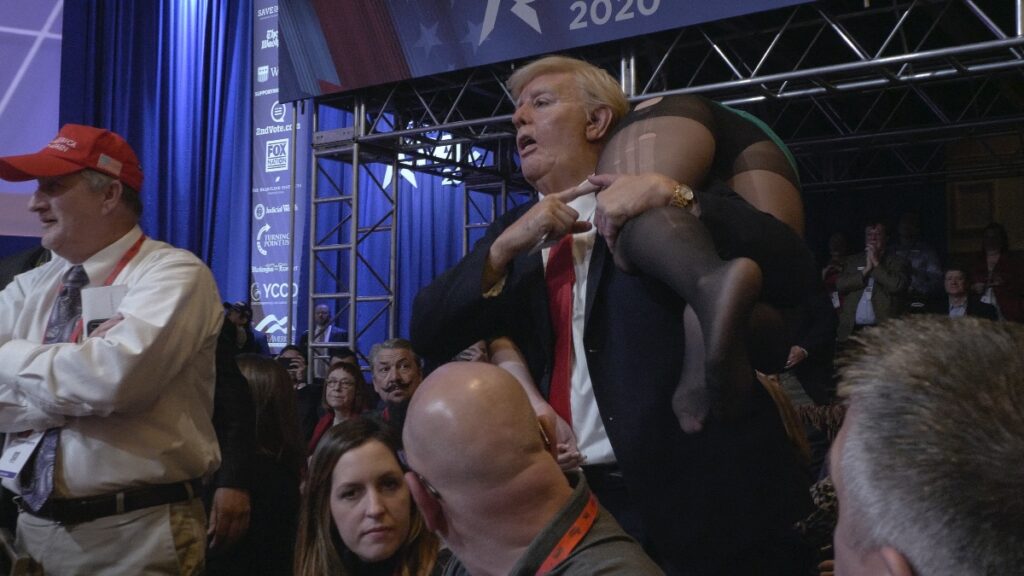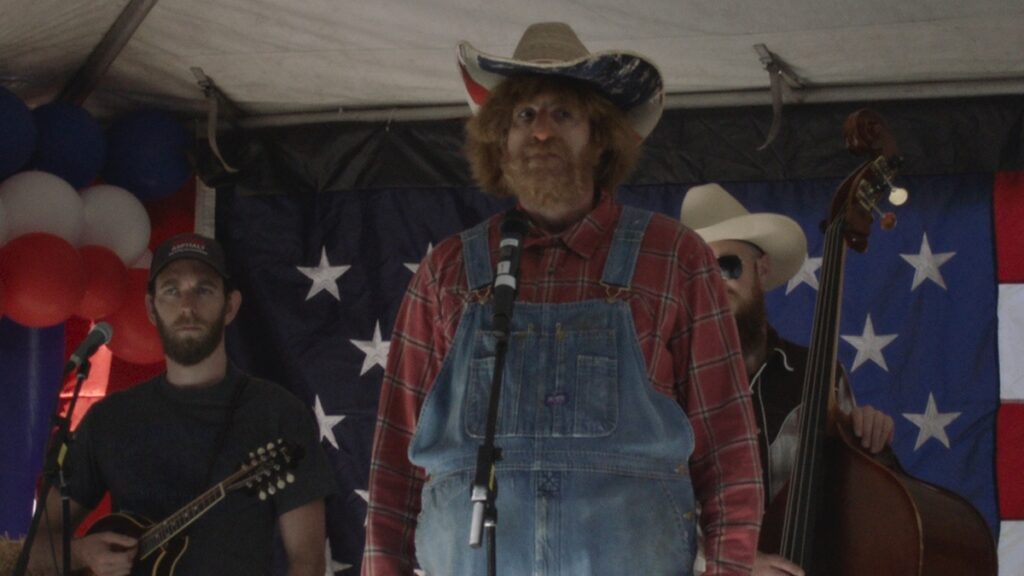
As far as pandemic films go, we have heard of movies that were postponed entirely because of COVID, and those that were made entirely after the shutdown began. One film perhaps will occupy a special place in the historical pantheon—a film that was shot both before, during, and after the epidemic began. A three-time Golden Globe nominee – it won two– Borat Subsequent Moviefilm (Borat 2, for short) was originally conceived as a political pseudo-documentary about the mindset of Trump supports, but it was finally cast as a movie about what happened to a country confused about how to grapple with the worst viral outbreak in 100 years.
How exactly does one complete a film that is supposed to have a lot of elements of improvised comedic effect, tell a political story, and have a defining narrative arc, when the world shifts entirely under your feet? And how does one even come to put together the footage that the filmmakers may have collected during these turbulent periods? The answer is: quite difficultly.
This past weekend, Below the Line sat down for a virtual talk with the prodigious film editing team behind Borat 2: James Thomas, Craig Alpert, and Michael Giambra, to talk about the remarkable work they did on the movie under unbelievable circumstances.
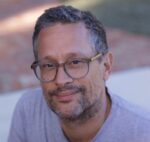
Below the Line: Let’s get right to it—you’re filming, and a pandemic hits. What is going through your head?
Craig Alpert: “Are we still going to have a job?” was probably the first thing we all said to each other.
James Thomas: When COVID hit, we had to take a step back from where we were in the film and reevaluate everything. Eventually, we realized that we had to embrace the pandemic and everything going on and adapt that into the story.
BTL: How far into your involvement in the film where you at that point, and how far into the movie were you?
Albert: We all came on at different times. I was the last, right after Michael.
Michael Giambra: I started in October, ultimately.
Thomas: For me, it was September 2019, so I was the first one. The film had been “mooted” for a while. There were some ideas about resurrecting the character and the midterms were the catalyst for [star and writer] Sacha [Baron Cohen] to getting it done. He rallied the troops at that point, got everyone together, wrote an outline in which COVID was not a thing, and then started bringing everyone on.
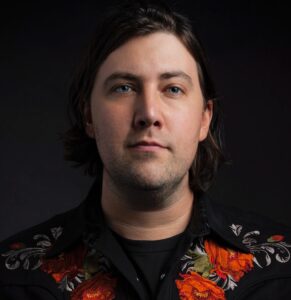
BTL: How was this different from the work you typically do, when you have a film that shoots over the course of several months, and that does a drastic turn in the middle to adapt to changing world circumstances?
Giambra: I’m used to working on episodic material for TV, so I edit as they shoot and edit cuts as they shoot, they give me notes while they’re shooting, and we can always make changes. A film like this that is constantly shifting and changing based on the political news of the day, they want to see how it turns out a week later. After the CPAC [Conservative Conference], we were still working on it because they had over 30 cameras shooting and shoot for days, and just that one day where Sacha was dressed as Trump, they shot for either hours. So it was much harder, just a lot more work to do when they have all this material and they want to see it one week later.
Thomas: Right, and there was so much more footage. iPhone footage, footage from a Korean TV network, stuff from the actual event itself, our cameras, etc. There were a lot of sources.
Giambra: It’s not like a traditional film where you have a circle take, here you have to look at reactions. We actually had to find and pull those reactions that we wanted, and where Mike Pence was speaking, a pivotal moment in that scene and in the film, at the time we overlooked it but later we realized how impactful it was because at the time no one was taking COVID seriously. Once we were sent home with our computers, we realized how it would change our lives forever, and we had to dig back into that CPAC footage in April to find the important stuff.
BTL: But they shot for months after CPAC, no? When did you finish the editing process?
Thomas: They shot until a month before its October release.
Alpert: In a film like this, they shoot, do a pass, and then go back out and shoot, and then do another pass. Sometimes what even happens in a scene that is a “real” scene can dictate where they story is going. In terms of editing, we went up all the way until we had to stop. We may have been editing the night before it was due.
We had negotiated with Amazon that we would deliver a cut for international and a cut for domestic. When we finally locked domestic Amazon said, “We’ll take that one for both.” We locked picture at two or three in the morning in the final night and they punched in to the D.I. and the mix early that morning.
Giambra: When we went home in March or April, we had a discussion whether it was going to come out before or after the election. Even though we had to stop a month editorially, we all unanimously thought it needed to come out before. I wouldn’t not have had as big a political splash. And I’m glad it did because it changed the course of events at least in Rudy Guiliani’s life.

BTL: Tell us about how you edited that scene, what material did you have, and what did you want to convey?
Thomas: We only had one shot—at least the stunt accent. It’s all in the preparation, in production. I think of it as robbing a bank, it’s a military style operation, they have everything ready and practiced. Maria [Bakalova] shows up and does a good job at basically seducing him and how you see it is essentially what happened. We actually had quite limited material to work with for a scene like that. It’s not like we can ask Rudy to stop and do it again. In some ways it makes it easier—for scenes like that, you get your one shot and it either works or doesn’t.
BTL: How did the movie change from where you thought it was going to be, or what it was going to be about, to the version the audience actually see? If so, what was different?
Alpert: Essentially the entire movie had to be reconceived once COVID hit. The CPAC scene was supposed to be basically the end, in the third act. It got pulled up to the middle. That meant cutting some things we had before, but we, Sacha, and the writing team had to figure out how to keep shooting this movie once the world shut down.
Thomas: Sacha likes it to be topical. His whole thing since he started is that there is kind of a zeitgeist to it. CPAC was going to be the finale, the resolution of the third act. When we found that beat of Pence saying, “I talked to the President yesterday and as of now we only have 15 confirmed cases of COVID — we are ready for everything,” that was a “wow” moment for us. There was like a pin drop moment. This has to be in there. The satire was handed to us on a plate and we all got excited about that. The writers worked their magic and reconceived it.
In terms of editing, Mike actually came up with an amazing sequence with all of the people who had been sent to jail under Donald Trump. There’s always a retooling that goes in editorial, it almost as a rewrite.
Giambra: COVID opened the ability of the satire to go into different directions. Anti vaxxers, QAnon, anti-mask wearers. No one was making comedy at the time that was focused on these subcultures. We did not even predict how bad it would culminate with January 6. And the time we had gave the writers time to rethink the film and it give us the editors to pull from previous footage any references to COVID and to rebuild up that arc.
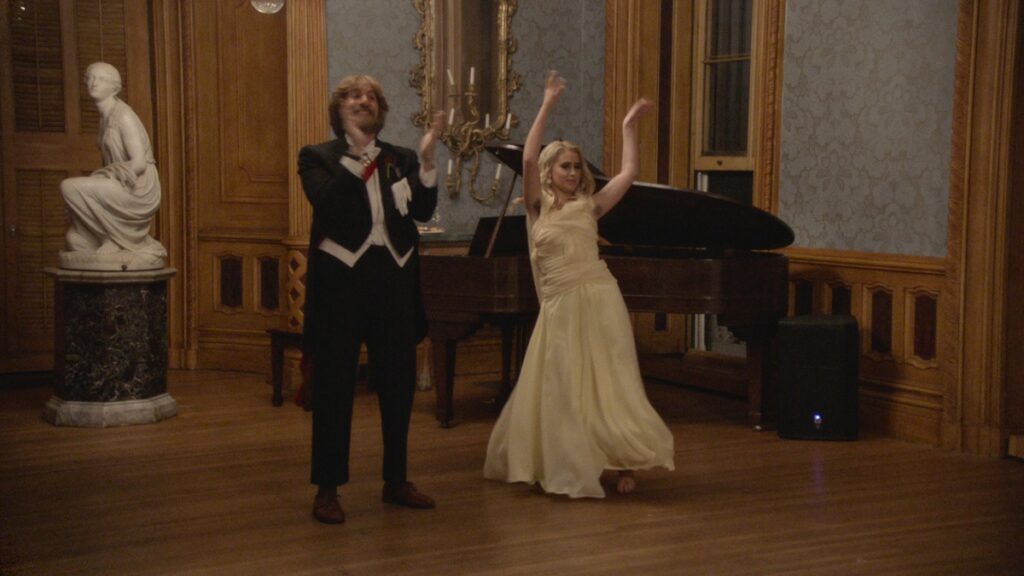
BTL: Talk to us about how you approach putting together the one-on-one scenes like where they’re in the post office or the counseling office?
Thomas: The camera is like a witness in those situations. These are real people. They are saying what they are saying and doing what they are doing. There is no intention to stitch someone up, only to see how it pushes the story forward. The pregnancy crisis center is a good example—we go in there as a viewer, knowing that there is total brilliant, almost classic misunderstanding. The writers of this satire are brilliant. We want to preserve that in a beat that preserves the satire, so we want to make sure it flows well. We are always careful not to seem like we are stitching someone up in there.
There are typically two cameras in those scenes, so a little less footage, and we just want to show almost documentary-style what happens.
Giambra: We have two cameras, the wide and the close-up. We don’t want to make them seem more malicious or anything, and if you do that in the editing that’s a bit immoral. That is the gift of Sacha’s acting—he can toe the line about pushing them so far that they will reveal a dark truth about themselves, but always bringing it back, making sure they don’t walk out of the room (though that has happened several times!).
BTL: What scene was very hard to edit, in your minds?
Alpert: The lockdown house. There were five days of over 40 cameras, essentially 24-hour shooting. So the amount of footage was a lot.
Thomas: 150 hours of dailies.
Alert: Those guys were aware of where the cameras were, and you have to watch it all and figure out how to sculpt the right story. With all that material and all the topics they discuss, we had to have a lot of people go in and make sure we saw everything and shaped it.
Thomas: It was the most time consuming, for sure. Multiple people had runs at that one. It was like its own little Big Brother house. That was definitely a challenge, especially to present the scene in a way that did not make the movie screech to a halt.
Alpert: It ended up 8 ½ minutes of the reel, but it was engaging because they said a lot of interesting things. Hopefully we’ll see more of it in the deleted scenes because a lot was lost, too.
BTL: Favorite scene to work on or favorite aspect of editing a movie like this?
Thomas: The other part of this movie we haven’t discussed is the scripted part between the father-daughter story. I really enjoyed weaving that scripted stuff into the crazier, “stunty” stuff. Being able to meld those two elements was difficult but my favorite part.
Alpert: For me, the amount of scenes that required all of us to bounce into was fun. It helped so much to have all three of us, at least for this type of film, with the amount of footage shot for each scene. Someone seemed to find something different. We all had to make sure we all saw it and had discussions. The collaborative effort was valuable.
Giambra: The pastor daughter scene had me in stiches every time. I really wanted to know what was going on in this guy’s head. He’s having these placid, still reactions, which is really interesting. The debutante ball was fun, because we did not have that many opportunities to get it right—about five cameras, so more limited material therefore challenging, which was fun.
BTL: Are we really not having a trilogy here?
Alpert: I believe Sacha that this is it [with a smile].
Thomas: Not sure we are going to see another one, but it has been a fun experience.!
Borat Subsequent Film is now available to stream via Amazon Prime Video. All photos courtesy of Amazon.

